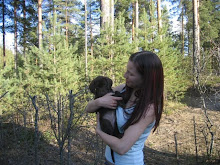
It never fails does it, you get a new puppy all warm and fuzzy and he just loves to show you affection by licking your face, and that is when you notice that fuzzy has a problem, horrible dog breath! The first thing you want to do is teach him to gargle or brush his teeth. The first thing to determine however is the source of the odor. Just like people, dogs get halitosis, or bad breath. The causes are also similar to the causes in people. Dogs can have bad breath due to poor oral hygiene or because of other underlying conditions. You should first have your dog checked out by the vet to be sure the cause is not medical.
Causes
Causes of bad breath in dogs runs from bad teeth to severe underlying medical conditions. Things like gum disease, tooth decay, gastrointestinal problems and sinus infections can all produce bad breath in your dog. Be sure you have ruled out an issue that would demand medical attention before utilizing any of the tips found below.
To prevent bad dog breath that is not medically caused it is important to begin oral hygiene practices when you first get your new puppy. This accomplishes two things at once, number one your new dog will become accustomed to the routine and not fight you as time progresses and you will likely prevent the number one cause of bad dog breath, which is gum disease. According to the American Veterinary Association 80% of all dogs have some form of gum disease.
Oral Hygiene
In the beginning, your dog may balk at having his or her teeth brushed. To start them gently you could use your fingers only for a few days, rubbing slightly on the gums to allow him to become accustomed to your touch. It can also be helpful to give a small treat for cooperation.
In order to keep your pets mouth in the best condition and prevent bad dog breath you will need a few tools.
• Doggy toothpaste- Never use your toothpaste for your pet as many brands contain Xylitol, which is harmful to dogs. Moreover, since dogs will swallow the paste it is better to use a product specifically designed for them.
• Doggy toothbrush- There are many varieties of toothbrushes you can use for your dog. There are mini, finger and dual ended dog toothbrushes to choose from and you may have to experiment to find the one your pet tolerates the best.
• Dry Cloth- Some dogs will object strongly to the use of any kind of brush in their mouth. In this case, you can use a small dry cloth to clean their teeth.
Brushing
To brush your dog's teeth effectively you should begin at the gum line and work the brush in small circles to the end of the tooth. While brushing your dog might start to squirm and get away from you, the best thing to do is to stop for the moment and revisit the tooth brushing at another time. If you force them to sit while you brush, Fido will become harder to find after he eats!
Dental Chews
You can also purchase dental chews for use after your dog's regular meal. These will help remove tough plaque and tartar that can build up over time and cause bad dog breath. Choose a chew that is double the size of your dog's mouth, but check for product recalls before purchasing, as some brands have been known to cause injury.
Conclusion
Keep your pet fit with annual veterinary visits. You vet should check the mouth for tooth decay and other oral problems and if they do not you should request one. Dogs do not always need teeth cleaning like we do, but it is a good idea to check at least once a year to be sure. Cure bad dog breath by never letting it get started in the first place!
Article written by Kelly Marshall of http://www.ohmydogsupplies.com - the leading dog supplies online store for dog grooming supplies.
Article Source: http://EzineArticles.com/?expert=Kelly_Marshall


No comments:
Post a Comment